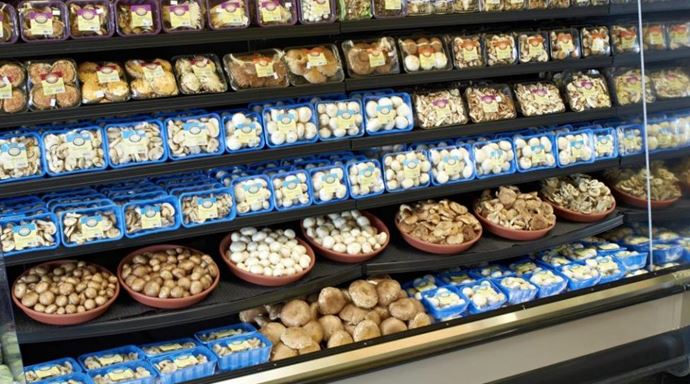
EVANSVILLE, Ind., April 18 (UPI) — As produce sales at grocery stores surge during the coronavirus pandemic, one item is selling particularly well — mushrooms.
During the last week of March, fresh mushroom sales were up 18 percent over the same time last year, compared to an 8 percent rise in overall fresh produce sales, according to the Chicago-based data and analytics firm IRI.
“We take heart in those numbers,” said Eric Davis, a spokesman for the Mushroom Council, an industry group based in Redwood Shores, Calif. “We take heart that we’re in that group of staple items. You look for bright spots during this time, and that is one for us.”
The Mushroom Council believes home cooks might be using mushrooms to stretch meat dishes and make them last longer, Davis said.
“It slots into so many things,” Davis said. “If you’re making meat loaf, you can add mushrooms. If you’re making stew, tacos, spaghetti, or even a packet of ramen, mushrooms bulk it out.”
Davis was quick to add, thought, that while retail demand is booming, demand from food service has all but disappeared.
Mushroom growers who supply retail stores are seeing a huge surge in demand. But those who sell predominantly to restaurants are struggling to sell their crops.
“Restaurants comprised about 75 percent of our business,” said Amanda Olson, owner of the Maine Mushroom Co., a one-year-old mushroom farm in Augusta, Maine.
“The day the governor of Maine issued an order that restaurants couldn’t be opened to the public, they all canceled their orders within 24 hours. It was pretty devastating,” Olson said.
Olson said she and her husband, Andy, grow specialty mushrooms for high-end restaurants. After Maine’s restaurants were closed March 18, they worried their business would go under.
The couple has worked quickly over the last few weeks to find new customers and have had some success, Olson said. The number of individuals who order mushrooms directly has exploded, and the couple has started to receive new orders from area natural food stores.
“The retail side from individuals just buying mushrooms and from natural food stores is up 300 percent,” Olson said. “The pathway to get to the customer has changed.”
The new business does not totally replace their lost restaurant customers, she said. But she thinks it will be enough to keep them afloat until stay-at-home rules end.
Other growers have seen similar trends.
In Pennsylvania, mushroom supplier Buona Foods has seen its retail demand increase some 35 percent, while food service contracts have dropped by roughly the same percentage.
“Until a month ago, we were about evenly split, half retail, half food service,” said Chris Johansen, a Buona Foods spokesman. “Now, we’re about 85-15.”
Because Buona Foods already supplied retail stores, it has been able to pivot and meet the new retail demand, Johansen said. Other businesses have been less fortunate.
“Growers that don’t have the right machinery to package for retail are in a difficult situation,” Johansen said. “There are many tons of mushrooms being dumped into fields because they have nowhere to go.”






